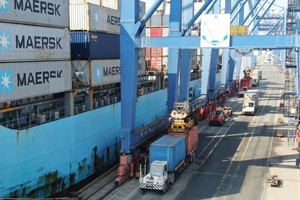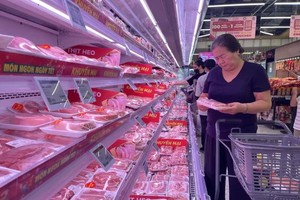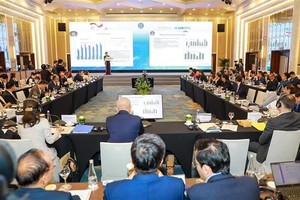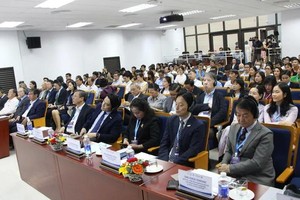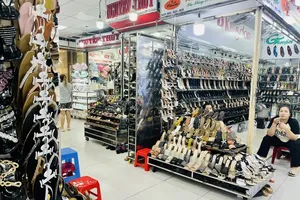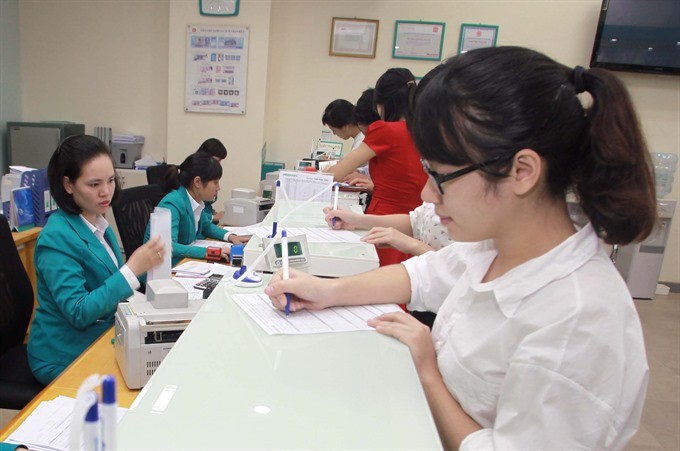
Nguyen Van Binh, member of the Party Central Committee’s Commission for Economic Affairs, told the Vietnam Economic Forum 2017 held in Hanoi that the nation’s exports were largely dependent on the foreign direct investment sector, while local companies were mainly exporting products and produce with little added value.
“This means the growth still comes significantly from external forces,” Binh said, adding that competitive advantages such as cheap labour would not last forever, especially with increasing competition from countries with lower production costs.
“Vietnam has reaches an economic development level which requires policy breakthroughs to become a higher-income country,” he said.
Statistics compiled by the Organisation for Economic Co-operation and Development (OECD) show that only 13 out of 113 middle-income countries in the 1960s managed to escape the middle-income trap and become high-income countries.
“What are the choices for Vietnam? What should we do to escape the middle-income trap and make Vietnam a new tiger of Asia?” Binh asked.
Jay Rosengard, a lecturer in public policy at the Harvard Kennedy School, felt Vietnam needed to focus on three things to gain higher growth before its population aged: investing in an infrastructure system to boost the private economic sector, improving public governance and creating a transparent and stable environment for long-term investment, and developing human resources.
6.7% it is
Deputy Minister of Planning and Investment Dang Huy Dong said at the forum that in the first half of this year, the macroeconomic situation remained stable.
GDP growth was initially estimated at 5.5-5.7 percent in the first half of the year and was on track to reach the Government’s target.
Dong said that the 6.7 percent economic growth targeted for the year was a difficult task, but achievable with determination and effort. The pressure to achieve the target would be high in the second half of the year, he added.
Nguyen Xuan Thanh, director of the Fulbright Economics Teaching Programe, said that a growth rate of 6.2-6.5 percent for 2017 would be more reasonable.
He said efforts to clean up the banking system and speed up privatisation of State-owned enterprises should go along with improving the efficiency of public investments.
Nguyen Hong Son, deputy director of Vietnam National University, Hanoi, felt the Government should strive for 6.7 percent growth, but not at all costs.
Growth must be based on macroeconomic stability, he said, adding that Vietnam must consolidate confidence of the private economic sector.
Economist Can Van Luc said that Vietnam should not exploit more crude oil to fulfill its GDP growth target, but promote consumption and tourism while improving the domestic business climate.
According to Truong Van Phuoc from the National Financial Supervisory Commission, it was important that the growth model is renovated and productivity improved to achieve sustainable growth in 2018-20 period.
Nguyen Dinh Cung, Director of the Central Institute for Economic Management, said that the Vietnamese economy had the potential of reaching 8-9 percent growth rates.
He said such high growth rates could be achieved by improving the efficiency of SOEs which had $300 billion in assets; and boosting the private economic sector, which has $200 billion in assets.
Speeding up disbursement of FDI and cutting costs for businesses would also speed up growth, he said.
”If the Government issues appropriate policies, the economic growth could potentially reach 8-9 percent rather than struggling at 6-7 percent at the moment,” Cung said.
Interest rates to drop
Interest rates for different term deposits are likely to decline by 0.5–1 percent over 2016 thanks to positive signals from the stock and property markets, macro-economic indexes, the Government’s attention to businesses and banks’ strategies for attracting new clients, lawyer Bui Quang Tin with the Business Administration Faculty of the Banking University of HCM City said at the forum.
However, he also said that there will be more challenges to stabilising interest rates on deposits in the remaining months of 2017, compared to 2016, as inflation and interest rates are expected to increase because the US Federal Reserve is projected to make at least three interest rate hikes this year.
Also, bad debts haven’t been fully settled, creating a big barrier to the lowering of interest rates, Tin said, adding it will exert bigger pressure on deposit rate hikes.
In the first quarter of 2017, deposit rates for different terms rose by several dozen basis points at some small and medium-sized banks. However, as a whole, deposit rates have not changed much from the beginning of the year.
Interest rates for deposits of less than six months were kept below the ceiling rate of 5.5 percent per annum, mostly between 4.3–5.5 percent. The rates were about 5.3–7 percent for deposits of six to under 12 months, and 6.5–8 percent per annum for 12 months upwards.
Meanwhile, lending rates were relatively stable. In prioritised areas, the rates ranged between 6–7 percent per annum for short term loans and 9–10 percent for medium and long term loans. The corresponding rates were 6.8–9 percent and 9.3–11 percent for loans in normal production and business areas.
The recent increase in deposit rates at some banks was attributed to their need to increase capital and meet capital adequacy-ratio requirements.
The shortage of liquidity, high inter-bank interest rates which have hampered some banks’ access to capital sources in the inter-bank market, and better credit growth are also reasons behind banks’ move to attract more deposits, the forum heard.
However, the pressure to increase deposit rates only applied to some banks, with major banks facing no liquidity shortage. The State Bank of Vietnam still has room to regulate the market and ensure low interest rates to support growth.
To stabilise lending rates, Tin suggested that the banking system should step up settlement of bad debts and restructuring of credit institutions. The difference between interest rates for loans and deposits in USD and VND should also be kept at reasonable levels, he added.




